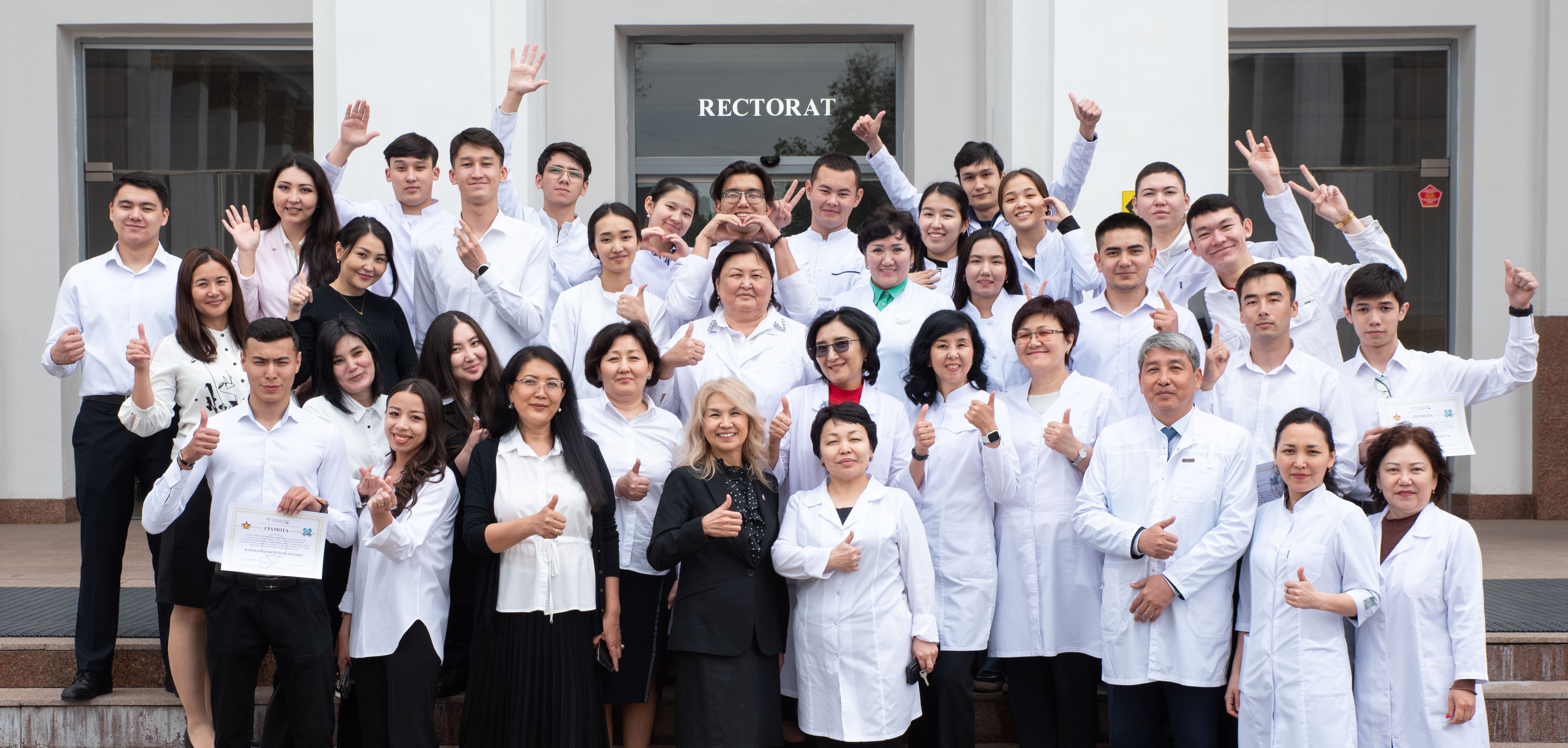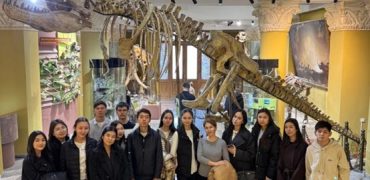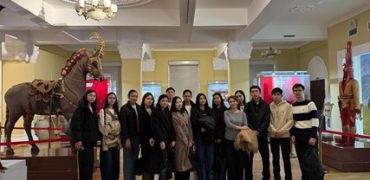On November 17, 2025, a study and educational excursion to the Museum of the National Academy of Sciences of the Republic of Kazakhstan was organized with first-year students of groups M25-015қ and M25-016қ. The excursion took place in the museum located in the Academy building at 28 Shevchenko Street, Almaty, from 11:40 to 12:40. The groups’ curator, S.B. Erkhanova, participated in the excursion.
The primary objective of the excursion was to develop students’ scientific worldview and provide a deeper understanding of Kazakhstan’s achievements in the development of science, its historical and cultural heritage, and the stages of development of domestic science.
The excursion began with the section “History of Science in Kazakhstan and the Rare Book Museum.” This section made a profound impression on the students through its comprehensive scientific exhibits, demonstrating the stages of the formation of science in the country. The exhibits included inscriptions on stones and balbal stones, as well as notable poets, educators, philosophers, and leaders of the Alash movement born in Kazakhstan who contributed to the development of Kazakh science, along with their fundamental research and scientific discoveries. Additionally, students examined ancient treatises in Arabic, Persian, and Chagatai languages, rare editions on natural sciences, and original versions of the earliest scientific maps. The museum staff provided valuable information regarding paper production techniques, book restoration, and the preservation of written heritage.
The next part of the excursion began in the paleontology hall of the Museum of Nature. This section provided students with extensive information on the geological stages of Earth’s development, evolutionary changes in life forms, and the scientific significance of fossil organisms. Exhibits, including trilobites, ammonites, dinosaur bones, and remains of ancient mammals, attracted particular interest as representations of the planet’s biological diversity millions of years ago. The guide scientifically explained the context of each discovery and its place in evolutionary biology. It was demonstrated that on the territory of Kazakhstan, fossils of marine invertebrates and plants were found in the Paleozoic era, dinosaur bones and ammonites in the Mesozoic, and mammalian fossils, such as mammoths and hipparions, in the Cenozoic. This information enhanced students’ interest in studying Kazakhstan’s history and allowed them to visualize the evolution of life at each stage.
Overall, the natural heritage closely linked to the geological history of the country, as presented in the paleontology hall, made a significant impression on the students.
The third part of the excursion was conducted in the Archaeological Museum. Here, valuable artifacts reflecting the culture of ancient civilizations on the territory of Kazakhstan were displayed, including Bronze Age pottery, Saka cultural ornaments, domestic and ritual items, and archaeological materials from medieval cities.
Each artifact was presented alongside scientific reconstructions, as well as detailed information regarding its cultural and historical significance, discovery methods, and dating.
The educational excursion significantly increased students’ interest in science, cultural heritage, and natural history. Familiarity with the rich scientific and historical heritage of their region strengthened their sense of responsibility, patriotic values, and respect for the national legacy.
At the conclusion of the excursion, students took a commemorative photo and returned with a lasting impression. The moments captured during the event were published on the official Instagram page of the National Academic Museum of the Republic of Kazakhstan, with the video link provided below:
https://www.instagram.com/reel/DRKD8ZbjP6W/?igsh=MXhueXRjcW9uOXd5bA%3D%3D


